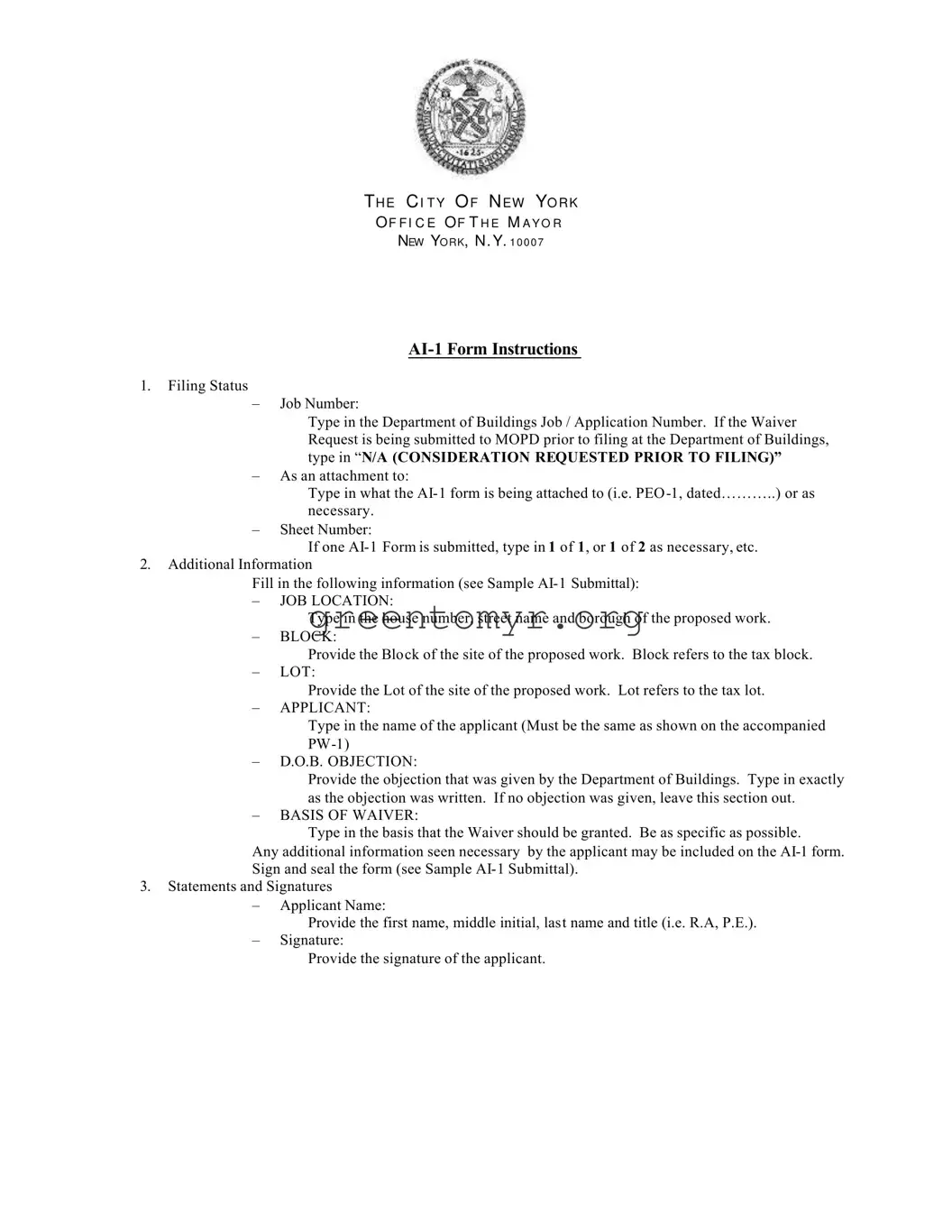TH E C I T Y O F N EW YO R K
O F F I C E O F T H E M A Y O R
NEW YO R K, N. Y. 1 0 0 0 7
AI-1 FORM INSTRUCTIONS
1.Filing Status
–Job Number:
Type in the Department of Buildings Job / Application Number. If the Waiver Request is being submitted to MOPD prior to filing at the Department of Buildings, type in “N/A (CONSIDERATION REQUESTED PRIOR TO FILING)”
–As an attachment to:
Type in what the AI-1 form is being attached to (i.e. PEO-1, dated………..) or as
necessary.
–Sheet Number:
If one AI-1 Form is submitted, type in 1 of 1, or 1 of 2 as necessary, etc.
2.Additional Information
Fill in the following information (see Sample AI-1 Submittal):
–JOB LOCATION:
Type in the house number, street name and borough of the proposed work.
–BLOCK:
Provide the Block of the site of the proposed work. Block refers to the tax block.
–LOT:
Provide the Lot of the site of the proposed work. Lot refers to the tax lot.
–APPLICANT:
Type in the name of the applicant (Must be the same as shown on the accompanied
PW-1)
–D.O.B. OBJECTION:
Provide the objection that was given by the Department of Buildings. Type in exactly as the objection was written. If no objection was given, leave this section out.
–BASIS OF WAIVER:
Type in the basis that the Waiver should be granted. Be as specific as possible.
Any additional information seen necessary by the applicant may be included on the AI-1 form. Sign and seal the form (see Sample AI-1 Submittal).
3.Statements and Signatures
–Applicant Name:
Provide the first name, middle initial, last name and title (i.e. R.A, P.E.).
–Signature:
Provide the signature of the applicant.

